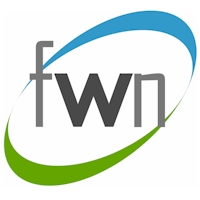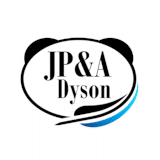
How To Earn Side Income As A Published Author: 5 Key Considerations
forbes.com – Wednesday August 28, 2024

Turning your writing into a side income can be both exciting and challenging. Whether you’re looking to pursue traditional or self-publishing, the process requires more than just a passion for writing. This article covers the key considerations to help you succeed, from the right publication path and importance of marketing, to realistic financial expectations, brand development, and the non-income benefits of being an author.
1. Choosing Your Path To Publication
Getting your book published is one of the toughest challenges for any aspiring author. The path from manuscript to print can be intimidating, especially in traditional publishing, where competition is fierce and success rates are low. Literary agents receive thousands of submissions, but only a tiny fraction—around 1 to 2%—get accepted.
As author Lauren E. Todd explains, “Literary agents get tens of thousands of queries every year, so it’s like, here’s my book in a sea of 20,000 submissions. The odds are very low.” This reality can be a tough pill to swallow for new writers trying to break into the industry.
If the traditional route seems too complex or restrictive, self-publishing is a solid alternative. It lets you skip the gatekeepers and bring your book directly to readers. It offers more creative freedom, faster publication, and potentially higher profits. However, it also means you’re responsible for everything—from writing to editing to marketing—which can be time-consuming and expensive.
The choice between these paths depends on your goals and resources. Traditional publishing offers professional validation and wider distribution but is a long and uncertain process. You need a strong query letter, a polished manuscript, and thorough research on an agent.

Trey Parker and Matt Stone’s Surprise NYU Class Contains Some Great Writing Advice
cracked.com – Tuesday August 27, 2024

Trey Parker and Matt Stone’s names have been bouncing around social media a lot lately — and not just because South Park warned everybody about that whole “Disney being pure evil” business. Multiple X/Twitter accounts have been generating thousands of likes with an old clip of the duo sharing the “greatest lesson in storytelling ever.”
Back in 2011, the duo were guest lecturers in Professor Ken Liotti’s “Story-Telling Strategies” class at NYU’s Tisch School of the Arts. Why? Well, it was all part of the show Stand In, which aired on mtvU, the MTV-owned channel for college students.
Each episode of Stand In found real, totally unsuspecting students being taught lessons by celebrity guests, such as Cameron Diaz, Seth MacFarlane and even Larry David, presumably because UCLA has an “Advanced Misanthropy” course. More regrettably, Ye guested in one episode, back when he was known as Kanye West. The episode isn’t online, so it’s unclear whether or not he spent the whole show force-feeding sushi to the students.
Parker and Stone’s surprise lesson was full of great advice, as the widely-shared clip illustrates. Specifically, Parker elucidated the need to provide motivation behind the events of a narrative, explaining that, when writing out the beats of a story outline, “If the words ‘and then’ belong between those beats, you’re fucked, basically. You’ve got something pretty boring. What should happen between every beat that you’ve written, is either the word ‘therefore’ or ‘but.’”
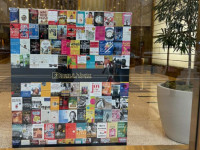
Think your book is done? Think again
niemanstoryboard.org – Friday August 23, 2024

As a first-time author, I’ve spent the past four years writing and reporting my debut nonfiction book, “SLIP: Life in the Middle of Eating Disorder Recovery.” It’s been such a long labor of love that some acquaintances have asked: “Wait, is this your second book, or are you still working on your first one?”
I understand why they ask; most people don’t know all that goes into landing a nonfiction book deal with a Big Five publisher. Sometimes, I give them the abbreviated version of how the process works, with the caveat that it plays out a bit differently for everyone. Here’s a quick overview of how it worked for me, followed by a special focus on what still needs to happen after you send in a complete manuscript:
Maybe you decide to self-publish. If not, you need to query literary agents, whose job is to sell your book to a publisher. If you’re lucky enough to sign with an agent and you haven’t already written a proposal, you write one with help from your agent. These are lengthy documents; mine was 85 pages. Your agent shops that proposal to various publishers — a submission process that can take weeks, months, sometimes years. Amid the rejections, you hope for a yes.
After a tremendous amount of work, I got my own yes from a Simon & Schuster imprint in December 2022. By that point, I had been working on “SLIP” for about two years, exploring ways to convey the nuances of eating disorder recovery through a mix of personal narrative, research and cutting-edge science. Once I signed my contract, I had 18 months to complete my reporting and writing.
I finished my manuscript in early June, but the work is far from done. I spent the summer in back-and-forths with my editor to fine-tune the final draft. Being at this stage feels like completing the last few miles of an ultra-marathon: It’s both exhausting and energizing; it requires the humility to accept most edits and the confidence to speak up when you disagree with others; it demands time, undivided attention and an openness to change — all in service of making your book as good as it can be before it goes out into the world.
Along the way, I’ve kept note of some related takeaways that have helped me through this last editing stage.
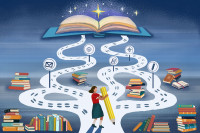
From bestselling novels to unpublished manuscripts, what is the secret to literary success?
news.northeastern.edu – Thursday August 22, 2024

You might think releasing 20 books — including four American Girl books — carries some weight in the publishing world. Yet, Kathryn Reiss still has four books, including a thriller for adults, in her repertoire that remain unpublished.
Reiss, an associate teaching professor in creative writing at Northeastern University’s Oakland campus, has made her name writing suspense novels for kids and teens; she published her first novel, “Time Windows,” in 1991 after writing it while on a Fulbright Scholarship in Germany. But she’s bumped up against a wall when trying to branch outside her niche.
“(Publishers) have to think they can market it,” Reiss said. “So if I want to do an adult book, or if I want to do some literary fiction that’s not a typical Kathryn Reiss suspense novel … they go ‘Well, how will we market that?’ You almost get stuck.”
Creative writing is an art, but writers face the same problem many artists do: how they can create something they like that people will also want to buy. Like any other business, book publishers want to sell a good product that they can easily market, Reiss said. But this makes it hard for writers to break out of their shell, if they can even break into the industry at all.
“For a new writer, you have to prove to them you have a very marketable book,” Reiss said. “What people don’t understand is once you’ve had a book published, it doesn’t mean you’re a shoo-in for your next book. It means your publisher will look at your next book.
“You have a one-up on someone who hasn’t published anything, but it isn’t a given. They have to think they can market it. … Publishers are really about making money. They care about their readers, but they want to sell books at the end of the day. That’s what they’re in the business to do.”

How I wrote a book in 15 minutes a day
fastcompany.com – Monday August 12, 2024

The first time I tried to write a novel I was 23. I had all the time in the world. I was a full-time graduate student. I lived alone, I had no children, and it took me three years to finish a draft.
Five years later, I tried again. I was working full-time as a reporter and I lived with my boyfriend, but we had no kids. This time, it took me five years.
All that time, my technique, if you could call it that, was the same: set up my laptop at a coffee shop or a library or at my desk at home, and “write.” But, as New York Times best-selling author Meghan O’Rourke recently tweeted: “It’s really important to have at least three hours to write every day so you can spend the first two hours squirming and checking the internet and daydreaming before getting down to it.”
Touché. I thought I needed hours with nothing to do but write. But even with all those hours, I didn’t produce much. So I started applying for retreats and residencies, thinking maybe I needed long stretches—days, weeks—to do nothing but write.
I wrote three novels that way. Fits of progress followed by long lulls of nothing. And then I had a child.
Suddenly, there were no long stretches.

Shogun by James Clavell: A Commentary by G. Miki Hayden
By G. Miki Hayden
Instructor at Writer's Digest University online and private writing coach
firstwriter.com – Friday August 2, 2024

Writers need to read their own work as readers, to make sure readers will understand the piece as written; but writers must also read the work of other writers as writers, to pick up writing hints and to understand what these writers had in mind.
So, I have been reading Shogun like a writer and here’s what I picked up, both positives and negatives.
One Shogun positive, of course, is author James Clavell’s extraordinary and specific descriptions. He doesn’t shrink from the horrific, for sure, but gives the unimaginably awful in its full gory glory. He presents a lot of dreadful images in the opening setting, for instance, in which the few remaining sailors on pilot Blackthorne’s ship are starving and their teeth have fallen out from scurvy (not Blackthorne’s teeth since he has secreted an apple or two from which he takes regular small bites). Then comes the storm. Worse follows. Later, people’s heads are cut off quite frequently with sharp swords in the Japan of 1600.
But why is this a positive? The tormenting of characters and readers with unbearable happenings? This is the hook, guys, and given the fame of the novel and its sale of six million copies on its first run from 1975 to 1980, the initial drama did its job. Here comes the hero, and he’s taking a terrible physical and emotional beating.
But Clavell brings us beauty of every type as well, including that of the Willow World of the courtesans, an impressive look at the ritual of the tea ceremony, and the enormous overcoming of the clever hero who learns to appreciate the relaxation and cleanliness of a hot bath—along with the Japanese language and Japanese manners, which are detailed fairly explicitly.

Rejecting writer’s block: rediscovering your writing passion this summer
theboar.org – Monday July 29, 2024

There is a sense of irony about writing whilst talking about writer’s block. But this frustrating struggle has been bothering me all throughout the summer months. Whether it’s a sense of burnout after exam season, or just the warm heat getting to my head, writing can be tough during such a long break. Every budding writer has experienced it, so where does it originate, and how do you get over this tendency found in every creative person?
The phenomenon of writer’s block is defined as the “temporary or lasting failure to put words on paper”, often provoked by worry, academic fatigue, or just the fear that your writing will not be good enough. Due to the fact that writing is such a creative process, relying on flow, passion, and courage, the inability to complete such a task is frustrating for the sufferer. Even successful authors, such as the Franz Kafka, have personal accounts of their frustration, with words in his letters poignantly phrasing that his personal worries and woes led to his despair and battle with creativity.
The antidote for writer’s block is often quite, dare I say, trivial. Many articles have told me to go on a walk, or remove distractions, and whilst I cannot deny this works to an extent, it will not hit the nail on the head. Returning to “the roll, the rise, the carol, the creation”, perhaps pretentiously put by Gerard Manley Hopkins, feels like it comes from within. The art of putting pen to paper is a personal thing, and overcoming that is tough.
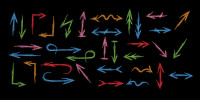
Peng Shepherd On Writing A Choose-You-Own-Adventure Speculative Mystery
crimereads.com – Tuesday July 23, 2024

Having just survived writing a speculative mystery novel that allows readers choose what happens at certain points in the story, when CrimReads asked me to write an essay about the experience in the same format, I felt:
Terror
Excitement
TERROR
It’s already hard enough to write a book. But to write one in which there are multiple versions of the main character’s story, all of which make sense, and more importantly, all of which feel just as true, was a whole new beast entirely. What if I’ve bitten off more than I can chew? What if readers think it’s too weird? What if I fail? The writing of the manuscript really was like a microcosm for life.
And this is the thing, both about writing and about life: one of the best parts is getting to make choices about what’s most important, because that’s how you define yourself as “you”—and one of the hardest parts is having to make choices about what’s most important, because you might get it wrong. And if you do, how do you live with that?
Nostalgia
No Good Options
NOSTALGIA
Many of us are familiar with the children’s Choose Your Own Adventure series of books from our childhood, in which you start as a blank “You” canvas and are immediately launched into an outlandishly fun adventure in outer space or on the open seas or deep in some jungle.
Why did we all love that series so much as kids? What was it about those paperbacks that could transport us somewhere else for entire afternoons at a time? My personal theory is that choice is exciting to children because at that age, you almost never get to make them. Most of your life is dictated by your parents or your teachers, and so any opportunity to exercise some autonomy, no matter how trivial, is thrilling. If you put on a blue shirt for bed, will the aliens invade Earth? If you have the granola instead of the chocolate puffs, will a portal open in your basement?
But when you’re an adult, the game changes. Now you have entirely too much choice, none of which leads to extraterrestrials or SCUBA diving for lost treasure in the Bermuda Triangle. The responsibilities can be so much, we might almost wish that sometimes, the pressure of choosing could briefly be taken away from us again.
Then it was.
You can only go to “No Good Options”
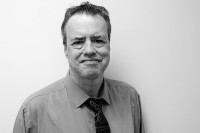
Thoughts on writer’s block and other first word problems
auburn-reporter.com – Sunday July 21, 2024

“I once heard an anecdote about a writer who’d spent a week in his apartment working on his novel, without a break. Compassionate friends finally dragged him away to dinner for the sake of sanity, and for a much needed breather.
“What did you get done this week?” the writer’s chums inquired.
“In the mornings, I put in a comma,” he answered gloomily, “and at night, I took it out again.”
Perhaps the guy had a creative block, who knows? But I’ll wager he’d also neither read nor followed the great Ray Bradbury’s advice in his book, “Zen in the Art of Writing.”
“This afternoon, burn down the house,” Bradbury wrote. “Tomorrow, pour critical water upon the simmering coals.”
In other words: don’t judge what you’re writing while you’re at it. Reserve your critiques for the editing phase. That’s the time to correct errors.
Of course, Bradbury is saying, the creative and judgement moods must be separated. Failing to recognize this is one sure way to get nothing done but spin your wheels, like our unfortunate writer with his vexing comma. When the creative fire is under you, go nuts.
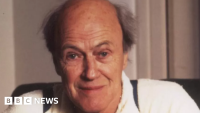
Working with Roald Dahl helped me find Harry Potter
bbc.co.uk – Saturday July 20, 2024

he publisher who discovered Harry Potter has said working with Cardiff-born children's author Roald Dahl helped him see the potential in JK Rowling's novel.
Barry Cunningham has worked with some of the most well-known children's authors in the world.
He said Roald Dahl was "a tall, quite grumpy, rather heroic, very frank author" who was adored by children.
"He was occasionally extremely grumpy and short tempered with adults, but never with children," he told the Books That Made Me programme on BBC Radio Wales.
Roald Dahl was born on 13 September 1916 in the Llandaff area of the Welsh capital, and died on 23 November 1990, aged 74.
As marketing director for Puffin, Mr Cunningham travelled around the country with him.
It was during one of those marketing trips that Dahl revealed what he believed was the secret to the success of his books.
Get the free newsletter | Submit a news item or article | Get Writers' News for your website

